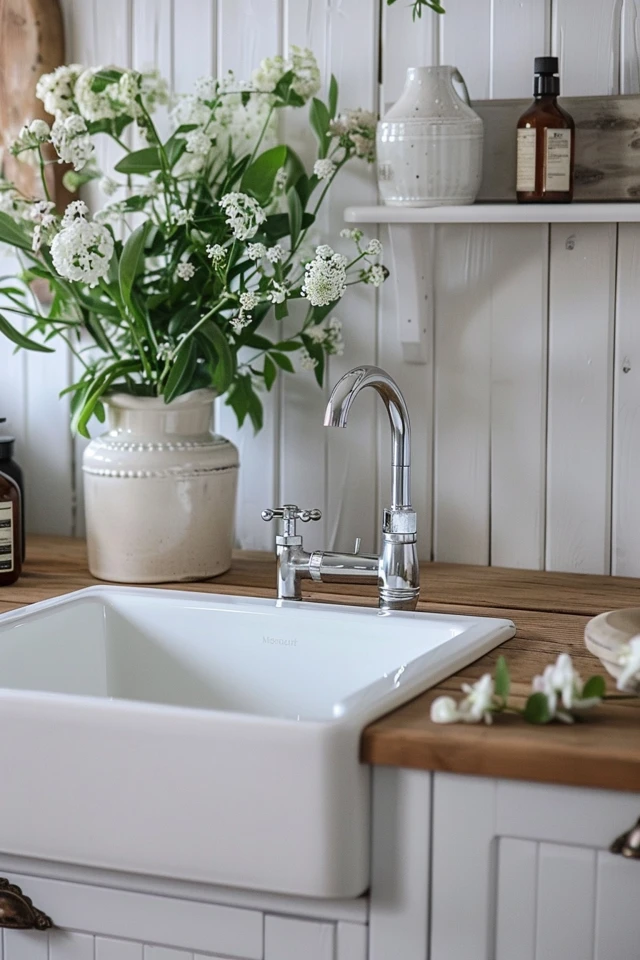I’m excited to share with you a simple DIY plumbing hack that can help you remove clogs from your drains using just a wire hanger. Say goodbye to expensive plumbing services and hello to easy drain cleaning!
So, how does it work? All you need to do is take a regular wire hanger and straighten it out. Then, create a small hook at one end. Now, it’s time to get to work.
Insert the hooked end of the wire hanger past the drain cover and start fishing. As you move the hook around, you’ll be able to catch hair and debris that are causing the clog. The key here is to pull out the gunk instead of pushing it further down the drain.
Once you’ve removed all the hair and debris, it’s time to clear the remaining buildup. Simply run hot water down the drain to help flush away any remaining residue.
It’s important to note that while this method is effective for most clogs, it may not be suitable for more severe blockages or complex plumbing issues. In such cases, it’s best to consult a professional plumber.
Key Takeaways:
- Snaking a drain with a wire hanger is a cost-effective and easy DIY plumbing solution.
- Straighten out a wire hanger and create a small hook to remove hair and debris from clogged drains.
- Pull out the gunk instead of pushing it further down the drain.
- Run hot water to clear any remaining buildup.
- For more complex plumbing issues, it’s best to consult a professional plumber.

Simple DIY Methods to Unclog a Drain
If you’re dealing with a clogged drain, there are several simple and effective DIY methods you can try before calling a professional plumber. These methods are not only cost-effective but also allow you to take care of the problem yourself. Here are some plumbing hacks and home maintenance tips to help you unclog drains:
Mix Baking Soda and Vinegar
A popular drain cleaning solution involves mixing baking soda and vinegar. To create a natural drain cleaner, pour 1/3 cup of baking soda down the drain, followed by 1/3 cup of vinegar. The chemical reaction between the two creates a fizzing action that helps break down the gunk and grime in the pipe. Let the mixture sit for an hour or overnight, and then flush it with hot water.
Use Dish Detergent and Hot Water
If you’re dealing with grease buildup in your drain, dish detergent can be a handy solution. Pour 1/2 cup of dish soap into the drain, followed by a cup of hot water. Let it sit for 15 minutes to allow the detergent to break down the grease, and then run hot water to clear the clog.
Try Using a Plunger
A plunger can be an effective tool for unclogging drains. Fill the sink or bowl with water until it covers the plunger’s cup. Place the plunger directly over the drain and pump vigorously up and down to create pressure. The pressure helps dislodge the clog and allows water to flow smoothly through the drain.
Use a Wet & Dry Vacuum
If you have a wet & dry vacuum, it can come in handy for unclogging drains. Set the vacuum to vacuum liquids and cover the vent to prevent a mess. Create a tight seal over the drain and turn on the vacuum to draw out the clog. This method is particularly effective for removing stubborn clogs.

Employ Boiling Water
Boiling water is a simple and quick method to unclog drains. Boil water in a kettle or pot and pour it slowly down the drain in stages. Allow the hot water to work its way through the pipe before each pour. The heat helps break down any blockages, allowing water to flow freely.
With these DIY plumbing methods, you can effectively unclog drains and restore proper water flow in your home. Remember to exercise caution and use safety measures as appropriate. If these methods don’t work or if you’re facing persistent clogging issues, it’s recommended to seek professional help for a thorough drain cleaning service.
Preventative Measures to Avoid Clogged Drains
When it comes to home maintenance, preventing clogged drains is essential. Follow these helpful plumbing tips to keep your drains clean and free from blockages.
First, use hair catchers in sinks and showers to stop hair and debris from clogging the drains. These simple devices can be easily installed and will save you from tedious drain cleaning tasks.
Second, consider installing drain covers to prevent unwanted items from going down the drain. By keeping larger objects out of your pipes, you can significantly reduce the risk of clogs.
Additionally, it’s important to avoid pouring grease down the sink. Grease can congeal and cause a stubborn blockage. Instead, dispose of grease in a heat-resistant container after it cools down.

To maintain clean drains, regular cleaning is key. Mix baking soda and vinegar together and pour the mixture down the drain. Let it sit for an hour before rinsing with hot water. This natural DIY solution helps break down any buildup and keeps your drains flowing smoothly.
Lastly, be mindful of what goes down your drains. Avoid rinsing mops, buckets, and rags in the bathtub, as they can lead to clogs. Make sure to wash pets in a separate area to prevent pet hair from clogging the drain.
If all else fails and you find yourself struggling with persistent clogs, don’t hesitate to call a professional plumber. They have the expertise and necessary tools to handle stubborn clogs and address any underlying issues that may be causing drainage problems in your home.

